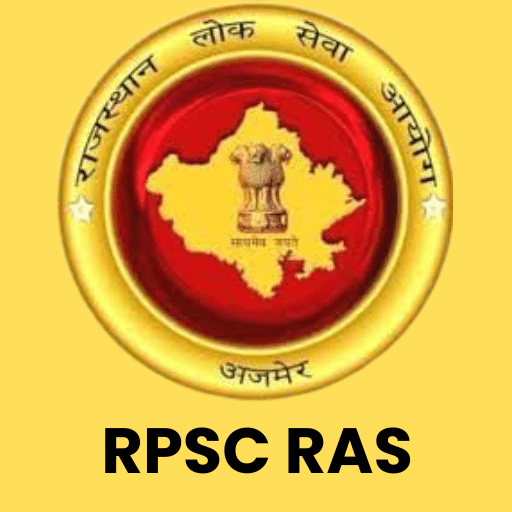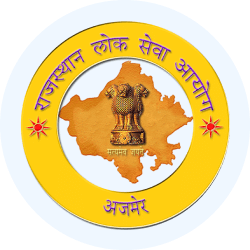RPSC Monthly Current Affairs: October 2024 | Monthly Current Affairs RPSC - RPSC RAS (Rajasthan) PDF Download
Breakthrough in IVF for Great Indian Bustard Conservation
The Great Indian Bustard (GIB), a bird on the brink of extinction, has seen a hopeful development with the successful birth of a chick through In-Vitro Fertilization (IVF). This achievement marks a significant advancement in efforts to conserve this critically endangered species.
Key Details
- IVF Success: The successful birth of a chick via IVF represents a pioneering effort in conservation for the Great Indian Bustard. This breakthrough is crucial as the species is experiencing a drastic decline in numbers, primarily due to habitat destruction and fatal encounters with power lines.
- Species Recovery Initiative: The chick was born as part of a recovery program at the Desert National Park in Rajasthan, the last stronghold for wild GIB populations.
- What is In-Vitro Fertilization (IVF)? IVF is a common assisted reproductive technology used to help with conception when natural methods are not viable. The process involves fertilizing an egg outside the body in a lab and then implanting the embryo back into the female’s uterus. This technique is now being adapted for wildlife conservation, as seen in the case of the Great Indian Bustard.
About the Great Indian Bustard
- Habitat: Found in the grasslands of Rajasthan, Gujarat, Maharashtra, and parts of Karnataka.
- Conservation Status: Listed as “Critically Endangered” on the International Union for Conservation of Nature (IUCN) Red List.
Desert National Park
- Located on the western border of India, in the Jaisalmer and Barmer Districts of Rajasthan.
- Significance: Home to the Great Indian Bustard and designated as a UNESCO World Heritage Site in 1980. The park was established as a National Park in 1992.
Rajasthan State Symbols
- State Animal: Chinkara (Indian Gazelle)
- State Tree: Khejri (Prosopis cineraria)
- State Flower: Rohida (Tecomella undulata)
Kutch Bustard Sanctuary
- The Kutch Bustard Sanctuary, situated close to Nalia in Gujarat's Kutch district, holds the distinction of being India's smallest sanctuary, covering a mere two square kilometers. Established in July 1992, the sanctuary, also referred to as the Lala-Parijan sanctuary, was primarily created to protect the endangered Great Indian bustard.
- Within this sanctuary, three species of bustards can be found: the Great Indian bustard, lesser floricans, and the Macqueen bustard.
Rajasthan’s Land Aggregation Law
Rajasthan is poised to become the first Indian state to introduce a Land Aggregation Bill in the State Assembly. This legislation aims to create a legal framework for land aggregation, benefiting both industries and farmers.
Goals of the Policy
- The policy aims to aggregate private land from willing owners, develop it, and return 25% of the developed land to the original owners. This compensation can be used for personal purposes or leased/sold for better returns.
- Farmers will become partners in development, benefiting from the developed land and the increased value of their remaining land, leading to higher incomes.
Focus on Global Investment
- The announcement of the Land Aggregation Bill comes ahead of the 'Rising Rajasthan' Global Investment Summit scheduled for December 2024.
- The state government has already signed over Rs. 12.50 lakh crore worth of Memorandums of Understanding (MoUs) during roadshows in Mumbai and Delhi.
Land Usage and Development Timeline
- The aggregated private land will be used for developing industrial parks, public infrastructure, and related projects.
- The development of aggregated land must be completed within five years; otherwise, it will revert to the Land Aggregation Authority.
Establishment of Land Aggregation Authority
- A new "Land Aggregation and Development Authority" will be established to oversee the aggregation and development of land.
- An Appellate Authority will be created to address grievances efficiently, minimizing the need for court proceedings.
Regional Benefits
- Specific regions, such as Banswara bordering Gujarat, and areas along the Delhi-Mumbai Industrial Corridor and Expressway, are expected to benefit significantly from this legislation.
Congo Fever Outbreak in Rajasthan
Recently, Rajasthan has reported a case of Crimean-Congo Hemorrhagic Fever (CCHF), leading to the death of a 51-year-old woman in Jodhpur. In response, the state government has issued guidelines to prevent further spread of the disease, and health teams are actively tracing symptomatic individuals.
Overview of Crimean-Congo Hemorrhagic Fever (CCHF)
- CCHF is a viral disease primarily transmitted to humans through tick bites or contact with infected animals. It can also spread through direct contact with bodily fluids of an infected person.
- The symptoms of CCHF onset suddenly and include high fever, muscle ache, dizziness, neck pain, and photophobia. Severe cases can lead to hemorrhaging, liver failure, and even death.
Government Response to CCHF Outbreak
- In response to the outbreak, the state government has directed hospitals to enhance vigilance, isolate potential cases, and conduct awareness campaigns about the disease.
- Health teams are actively involved in tracing individuals exhibiting symptoms of CCHF to prevent further transmission.
Fatality Rates and Disease Characteristics
- CCHF virus is associated with a high fatality rate, ranging from 5% to 80%, especially in cases of nosocomial infection.
- The virus causes little or no disease in its natural hosts (animals) but leads to severe infection in humans.
- The disease was first described in the Crimea in 1944 and was identified as responsible for an illness in a human in Congo in 1956.
Symptoms of CCHF
- Common symptoms include headache, high fever, back, joint, and stomach pain, and vomiting. Rarer signs involve jaundice, severe bruising, and uncontrolled bleeding.
- The regular modes of infection in humans include tick bites, nosocomial infections, rushing of infected ticks, direct contact with CCHF virus-infected blood or tissue, and direct contact with infected animals.
Treatment Options for CCHF
- Treatment options for CCHF are limited, with Ribavirin being the only known effective drug against it.
EIS
- Shepherds, campers, agricultural workers, veterinarians, abattoir workers, and others in close contact with livestock and ticks are at risk of infection.
- Human-to-human transmission can occur through close contact with infected blood, secretions, organs, or other body fluids.
Need for Awareness Programs
- There is a need for awareness programs for people living in close proximity to livestock, individuals working in slaughterhouses, those handling animal carcasses for a livelihood, and health workers.
- Training is required for personnel working in primary healthcare centers, rural and district hospitals on biosafety issues, including isolation protocols.
Roop Kanwar Case: Revisiting India’s Last Sati Incident
- Sati: Recently, 37 years after Roop Kanwar’s death, a Jaipur court acquitted eight individuals accused of glorifying the act due to insufficient evidence.
- Roop Kanwar’s Sati Incident (1987): Roop Kanwar, an 18-year-old woman from Divrala, Rajasthan, allegedly committed sati on 4th September 1987, by sitting on her husband’s funeral pyre. Thousands of people reportedly witnessed her dressed in “solah shringaar” (16 adornments) and chanting the Gayatri Mantra during the event.
- The Commission of Sati (Prevention) Act, 1987: Enacted after Roop Kanwar’s incident, this law seeks to prevent the practice of sati and its glorification.
- Important Provisions: Section 3: Punishment for attempt to commit sati, which includes life imprisonment. Section 5: Punishment for glorification of sati, including up to 7 years of imprisonment and a fine of Rs 30,000. Glorification of Sati includes any act of organizing events, creating memorials, or promoting the veneration of a woman who committed sati.
- The Commission of Sati (Prevention) Act, 1987: This act prohibits the practice of Sati against women. “Sati” means the act of burning or burying alive of: any widow along with the body of her deceased husband or any other relative or with any article, object or thing associated with the husband or such relative; or any woman along with the body of any of her relatives, irrespective of whether such burning or burying is claimed to be voluntary on the part of the widow or the woman or otherwise.
 |
Download the notes
RPSC Monthly Current Affairs: October 2024
|
Download as PDF |
Man-Eating Leopard Hunt in Udaipur
Authorities in Udaipur district are actively searching for a leopard responsible for multiple fatalities. The leopard has been implicated in the deaths of seven people in the district. Search teams from the forest department, police, and Indian Army are involved in efforts to capture or eliminate the animal.
- Search Efforts: Cages have been set up in various locations as part of the search efforts. Local villagers are assisting in the search and capture efforts.
- Chief Wildlife Warden's Order: Following a recent fatal attack on a 55-year-old woman, the Chief Wildlife Warden ordered the leopard to be shot. The hunt for the animal continues in Gogunda and nearby areas.
- Chief Wildlife Warden (CWLW): The Chief Wildlife Warden is the statutory authority responsible for overseeing the Wildlife Wing of the state forest department. The CWLW exercises full administrative control over Protected Areas (PAs) within the state, ensuring the implementation of wildlife protection measures. Each Protected Area is generally classified as a Wildlife Division, with administrative responsibilities headed by a Deputy Conservator of Forests (DCF).
Tata Power's Major Investment in Rajasthan
Recently, Tata Power made a significant announcement regarding its commitment to transform Rajasthan into a power surplus state. The company plans to invest a whopping Rs. 1.2 trillion (approximately $14.3 billion) over the next decade to enhance Rajasthan's power sector.
Breakdown of the Investment:
- Renewable Energy: Tata Power will allocate Rs. 75,000 crore to renewable energy projects.
- Transmission and Distribution: Rs. 20,000 crore will be invested in modernizing transmission and distribution systems to minimize energy losses and enhance power quality.
- Nuclear Power Plants: An investment of Rs. 10,000 crore will be dedicated to exploring opportunities for developing nuclear power plants.
- Electric Vehicle (EV) Charging Points: Rs. 1,000 crore will be utilized to establish 1 lakh EV charging points across the state.
Rooftop Solar Power:
- PM Surya Ghar Yojana: The plan includes the installation of solar rooftop systems for 10 lakh households under the PM Surya Ghar Yojana.
- Job Creation: This substantial investment is expected to generate over 28,000 direct jobs in Rajasthan.
About PM Surya Ghar Yojana:
- Overview: The PM Surya Ghar Yojana is a central scheme aimed at promoting the adoption of solar rooftop systems by providing significant financial subsidies and facilitating easy installation.
- Goal: The primary objective of the scheme is to offer free electricity to one crore households in India that choose to install rooftop solar electricity units.
- Implementation: The scheme will be implemented at both national and state levels.
- National Level: Managed by the National Programme Implementation Agency (NPIA).
- State Level: Overseen by State Implementation Agencies (SIAs), which are typically the Distribution Utilities (DISCOMs) or Power/Energy Departments of the respective states or Union Territories (UTs).
- Role of DISCOMs: As State Implementation Agencies, DISCOMs play a crucial role in promoting rooftop solar adoption by ensuring the availability of net meters and conducting timely inspections and commissioning of installations.
FAQs on RPSC Monthly Current Affairs: October 2024 - Monthly Current Affairs RPSC - RPSC RAS (Rajasthan)
| 1. What is the significance of the breakthrough in IVF for Great Indian Bustard conservation? |  |
| 2. How does IVF contribute to the conservation efforts of the Great Indian Bustard? |  |
| 3. What challenges do conservationists face in the IVF process for the Great Indian Bustard? |  |
| 4. What are the current population trends of the Great Indian Bustard, and how does IVF aim to address them? |  |
| 5. Are there any other conservation strategies being implemented alongside IVF for the Great Indian Bustard? |  |





























